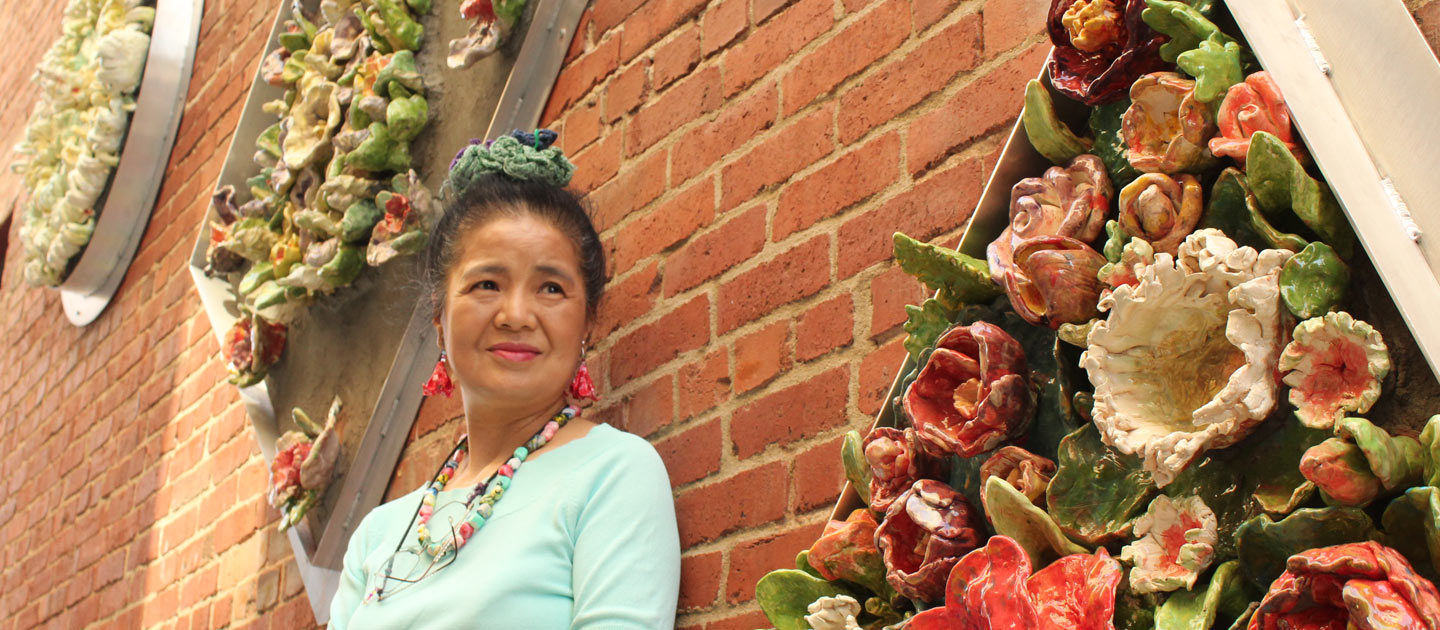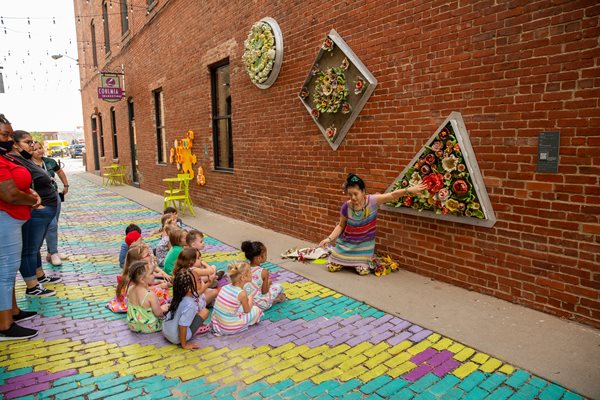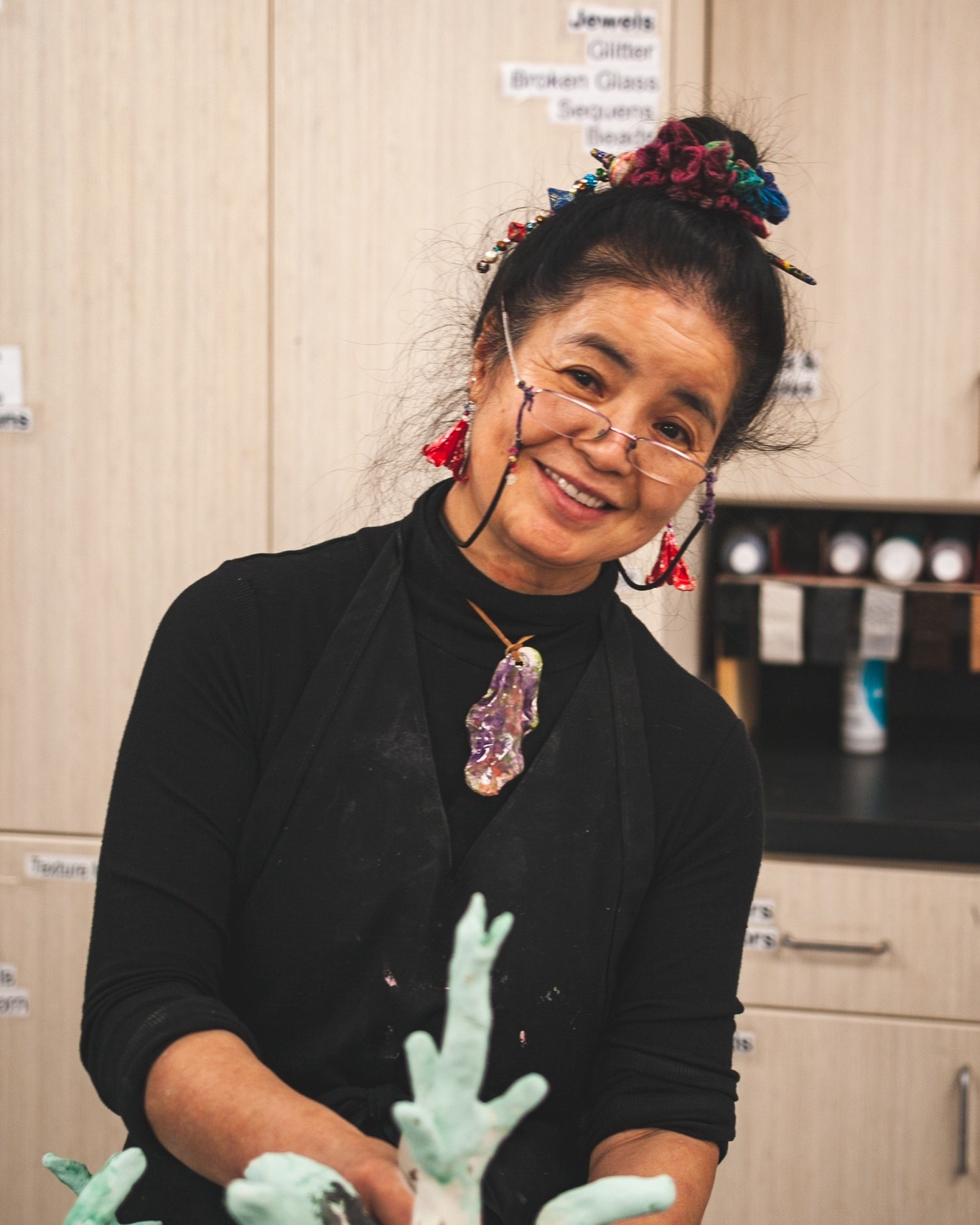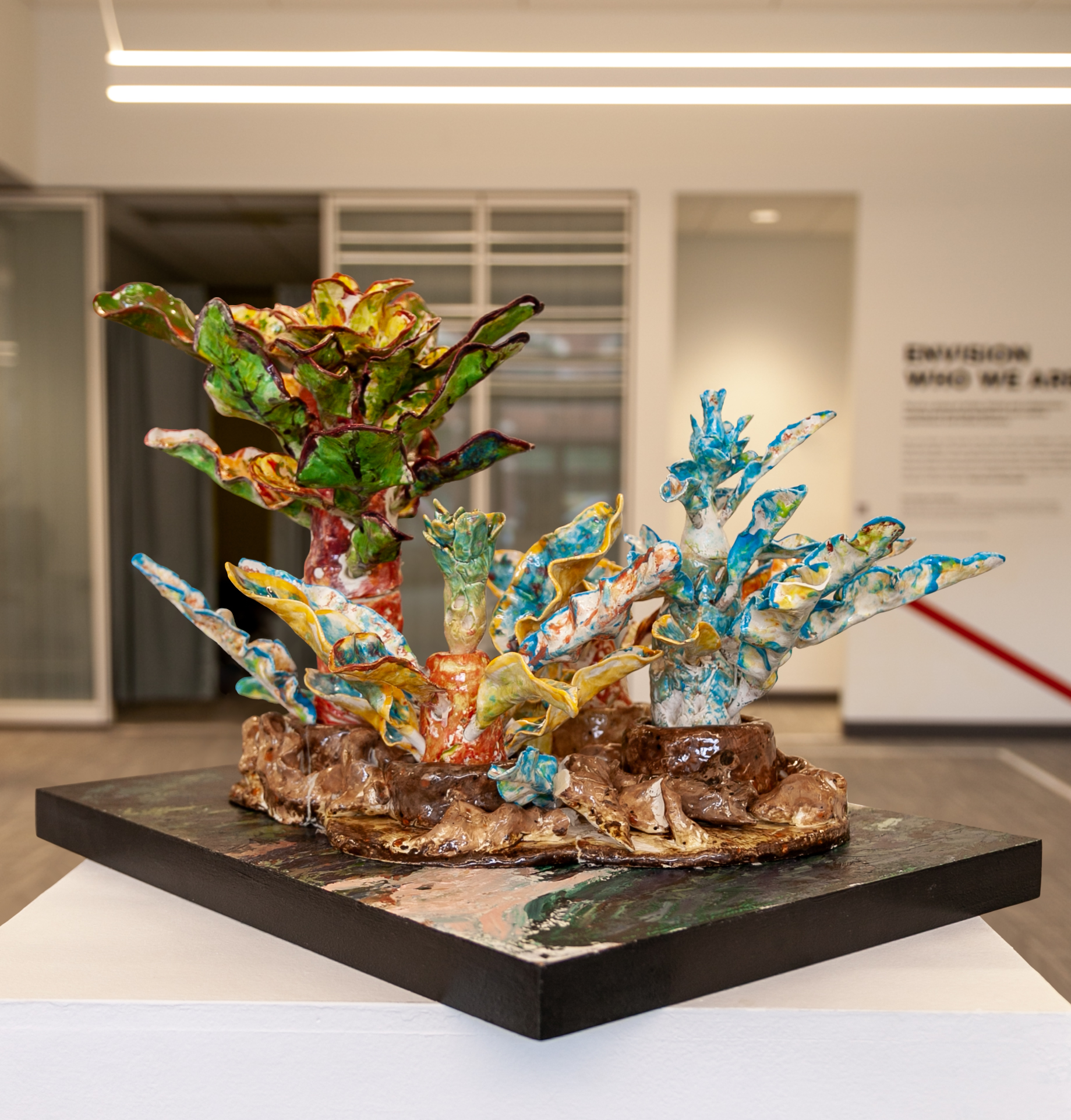Tomiyo Tajiri is an artist who participates in the Envision Arts Program and shares Japanese traditions through her art and fashion. She aims to inspire and heal through her touchable and colorful artwork.
Tomiyo grew up on Okino-Erabu-Shima, a small island located north of the Island of Okinawa. As a very young child she grew up watching the native flowers of Japan delicately bloom, while at the same time watching them dance with great strength in the typhoon forced winds. Tomiyo moved to the United States in 1995 and soon thereafter started losing her vision. Tomiyo was no longer able to recognize or differentiate colors in her visual field as Retinitis Pigmentosa set in, shrinking her peripheral vision with time, leaving her with only a pinhole of vision remaining.
Tomiyo spent much of her career honoring the traditions of Japanese art and tradition hosting origami workshops in California and New York, and eventually selling her work at the Wichita Art Museum. She is one of many artists who have been featured in the new Envision Arts Gallery and Community Engagement Center. Her first featured piece of artwork
In 2019, Tomiyo was awarded a $5,000 grant to create her first public work art, "Maitreya," which was selected by Downtown Wichita to be designed and permanently installed in downtown Wichita, Kansas in Gallery Alley. Maitreya is composed of three shapes, a circle, rhombus, and a triangle filled with ceramic flowers that are native from her homeland to address unity, peace, and harmony.
"I lost my vision, and I cannot see but there are things I can do and enjoy, which is very important," said Tomiyo. "I don't worry about unnecessary things in my life. I enjoy my art and my life so maybe I will live to be 120, because I have my art in my heart. When I touch, it's like I can see. Blind people cannot see art and the design, so blind people need to touch. I cannot see with my eyes, but I enjoy touching and feeling. My dark heart heals and becomes bright, so I want to recommend that people touch art.
In the fall of 2021, Tomiyo hosted an installation in Salina, Kansas at the Flower Nook with a 15’ ceramic flower screen. She also won 2nd place in the sculpture category at the 2021 American Printing House (APH) for the Blind InSights Art Competition for her artwork "Peaceful" which is featured in their annual calendar.
"Low vision people need to enjoy art, touching, feeling, healing," said Tomiyo. "I don't worry that I lost my vision because I enjoy my blind life. I find more good things because I am lucky. Twenty five years ago, I had good eyes and I could see, now I lost my vision and one time in my life I have enjoyed two lives. I am lucky God gave me my blind life too. I just lost my vision, but I can talk, I can hear, I can smell, I can walk with someone’s help. My hands work, I just lost the vision, it's no trouble, I have many more things I can do."
"Eye Forest" by Tomiyo Tajiri
A 20 x 19 x 12-inch ceramic sculpture depicts a landscape in the shape of a oval shaped land form. Four small plants rise up from a brown colored base with roots creeping and moving about. Each plant stem has a variety of thinly formed leaves that undulate, and flow as if they were in the wind and are positioned at an angle and perpendicular to the center stem in colors of blue, whites, maroons, and greens. The varying heights of each plant cascade down at an angle. The landscape seems to be plucked from her native island of Japan and rests upon a 2-inch board in a dark and richly colored painting that is displayed on large white pedestal.
To support our crucial programs and services, please visit envisionus.com/donate.



